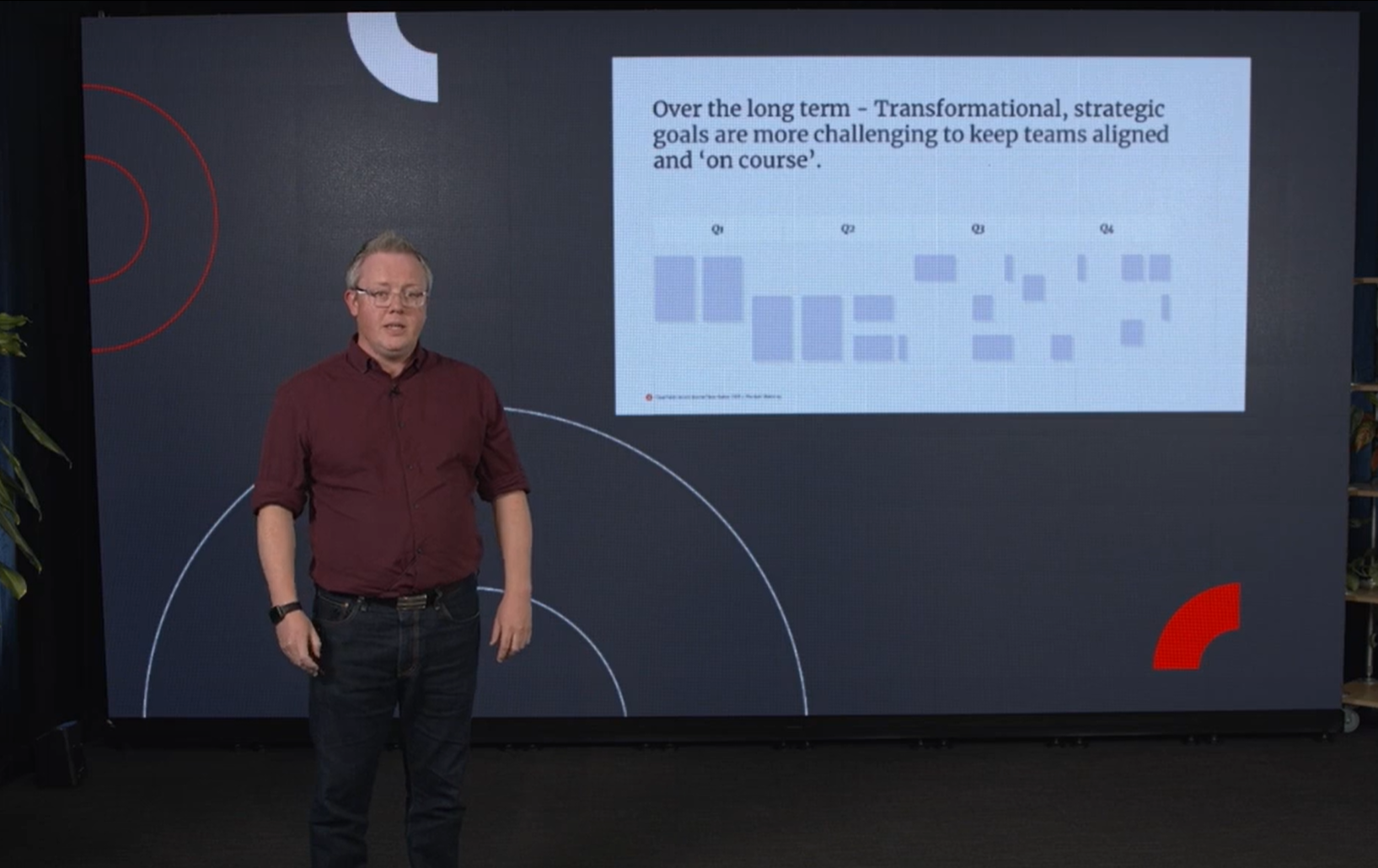Focusing on short-term roadmaps and development cycles can make it relatively straightforward for organisations to remain concentrated on incremental feature releases. However, this approach isn’t as effective when driving digital transformation, as it doesn’t provide a view of the long-term purpose an organisation is moving towards.
Businesses may create Big Hairy Audacious Goals (BHAGs) to drive future-focused momentum that provides direction for transformation, long-term investment and delivery of strategic innovation. That said, in the long term these transformational, strategic goals can be more challenging to keep teams aligned on.
As the strategic goals that underpin transformation are often defined as abstract statements, this can introduce ambiguity – particularly when specific customer outcomes are left undefined. In light of existing workloads and the many complexities of actually delivering change, teams can lose focus on the why: the key insights and driving factors behind the new strategy.
Compounding this challenge is the fact that change is a constant and dynamic force in the business landscape. Key people come and go, market opportunities evolve, goals may shift from being customer-centric to delivery-oriented, and stakeholders may lose alignment, motivation and financial commitment to seeing it through.
Long-term, strategic, transformational change is arguably more successful when there is an additional component. Between high-level business strategy and the practical implementation of change by multiple teams and disciplines, should be a tangible and specific product vision.
What is a product vision?
A product vision is a clear, strategic statement that defines the purpose and direction of a product while providing a shared focus for teams, stakeholders and customers. This vision provides clarity on the product’s purpose and intended impact.
The process of creating and refining the product vision is done through product visioning, a collaborative and iterative exercise that involves a cross-functional team of stakeholders, including product managers, designers, engineers, marketers and executives. This typically involves defining a specific problem or opportunity, creating a shared understanding, developing the vision statement, and communicating this vision.
Product visioning creates a tangible and specific set of artifacts that gives teams something to reference when facing the challenging realities of a long-term transformation. It should include a cohesive framework for establishing business objectives and designing customer experiences, a detailed anchor point for ongoing scope and roadmap planning, and a “North Star” to maintain a customer-centric focus.
More urgently than ever before, your business needs to delight users with products they’ll love. Find out how ClearPoint helps digital leaders unlock the potential of their products and services.
The importance of a product vision
ClearPoint’s work with some of New Zealand’s leading businesses has demonstrated that transformational change works best when strategy is combined with a product vision.
At the core of every business are individuals who require clarity, direction and a sense of purpose to effectively work towards a shared goal. A well-defined product vision serves as a powerful tool to convey the necessary details and narrative to foster a shared belief in a specific, customer-centric outcome.
By aligning on a common purpose, organisations can ensure teams remain focused on larger strategic objectives, rather than getting lost in the daily demands of work. This sense of purpose and shared understanding is critical to achieving sustained success and big-picture transformation.
Start with a value proposition
A strong product vision starts with a clear value proposition that is aligned with the needs and expectations of the target customer. A value proposition is a statement that outlines the unique benefits that a product or service provides customers. It is a crucial aspect of any product strategy because it is the driving purpose that the vision is centred on.
To have impact, a statement of purpose needs to be aligned to business strategy with mandate from senior stakeholders, and provide a meaningful why that justifies team member commitment over the months and years that it takes to execute. A well-crafted value proposition enables differentiation from competitors, a customer-centric approach, and improved clarity from customers in understanding what they can expect from the product.
In summary, a well-defined product vision is a critical component of driving sustained success and transformative change. It provides a north star for teams and stakeholders – with a shared understanding that provides clarity on the product’s purpose and intended impact. With a strong product vision, teams can align on a common purpose that drives powerful future outcomes.
In our next blog, we’ll dig into the key components of a meaningful product vision and lay out a framework to follow.
Get in touch to understand how ClearPoint can help you translate strategy and insight into action. This includes envisioning your ‘north star’ for change and transformation, and validating your future direction and experiences with customers to create a practical roadmap for change.





